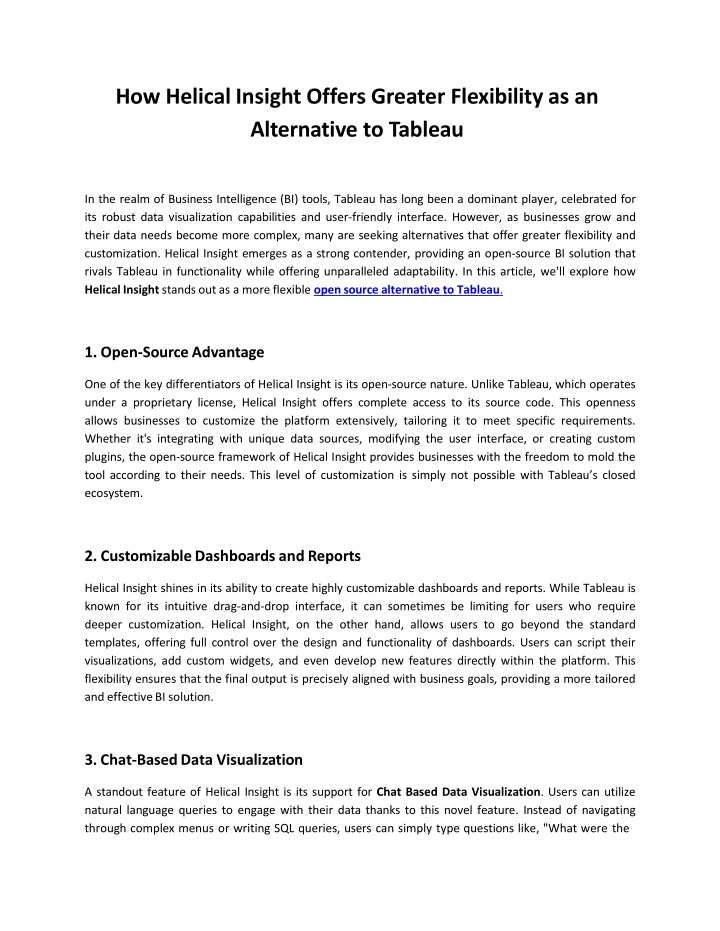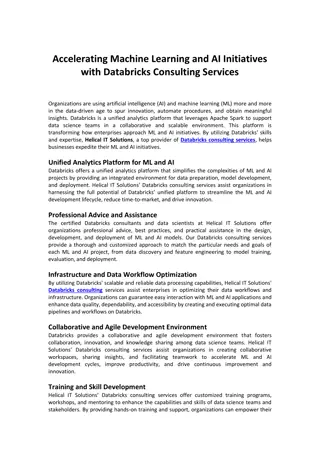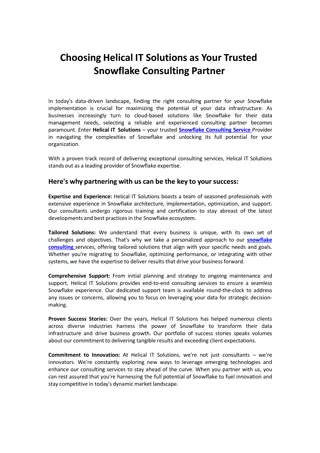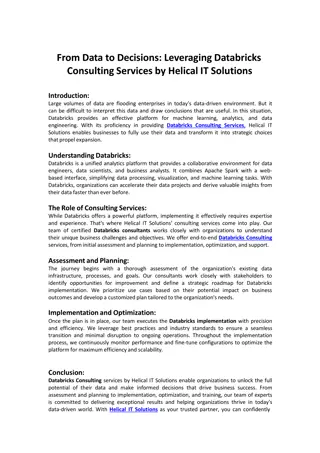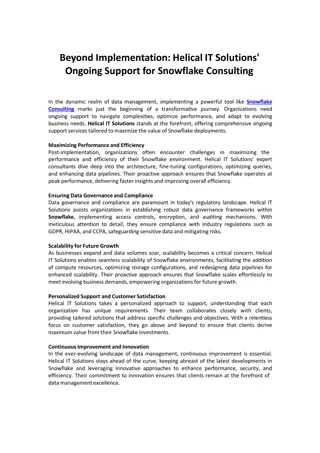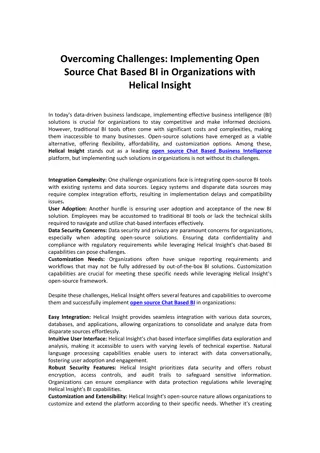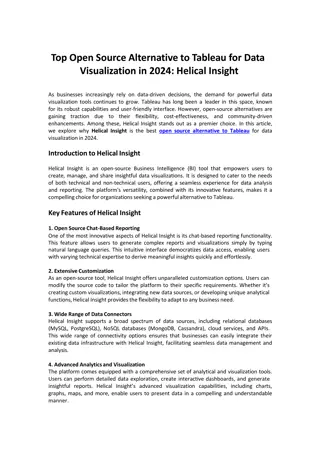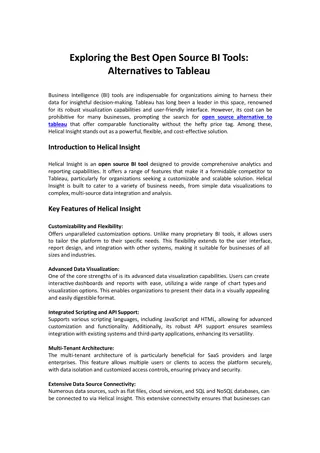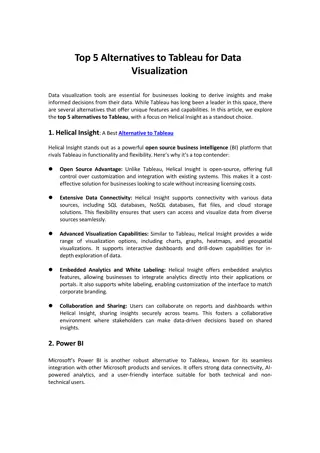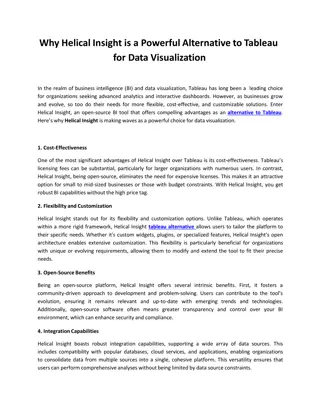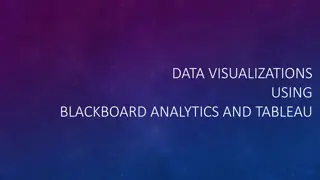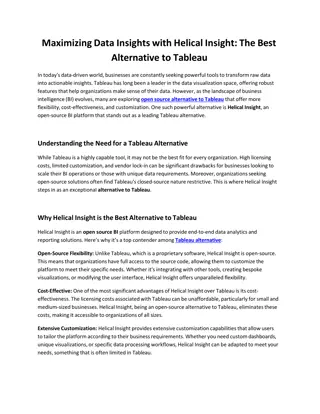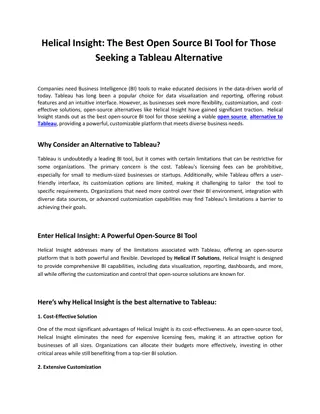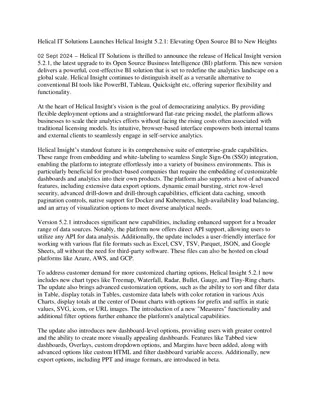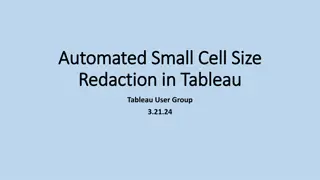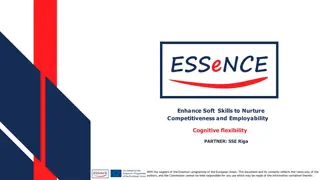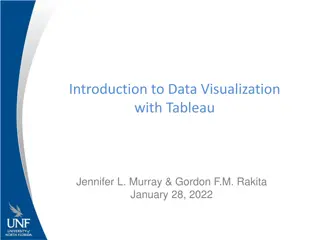Helical Insight Offers Best Flexibility as an Alternative to Tableau
Helical Insight offers a compelling alternative to Tableau, particularly for businesses seeking greater flexibility and control over their BI environment. Its open-source nature, customizable dashboards, chat-based data visualization, cost-effective
Download Presentation

Please find below an Image/Link to download the presentation.
The content on the website is provided AS IS for your information and personal use only. It may not be sold, licensed, or shared on other websites without obtaining consent from the author.If you encounter any issues during the download, it is possible that the publisher has removed the file from their server.
You are allowed to download the files provided on this website for personal or commercial use, subject to the condition that they are used lawfully. All files are the property of their respective owners.
The content on the website is provided AS IS for your information and personal use only. It may not be sold, licensed, or shared on other websites without obtaining consent from the author.
E N D
Presentation Transcript
How HelicalInsight Offers Greater Flexibility as an Alternative to Tableau In the realm of Business Intelligence (BI) tools, Tableau has long been a dominant player, celebrated for its robust data visualization capabilities and user-friendly interface. However, as businesses grow and their data needs become more complex, many are seeking alternatives that offer greater flexibility and customization. Helical Insight emerges as a strong contender, providing an open-source BI solution that rivals Tableau in functionality while offering unparalleled adaptability. In this article, we'll explore how HelicalInsightstandsoutas a moreflexible opensourcealternative to Tableau. 1. Open-Source Advantage One of the key differentiators of Helical Insight is its open-source nature. Unlike Tableau, which operates under a proprietary license, Helical Insight offers complete access to its source code. This openness allows businesses to customize the platform extensively, tailoring it to meet specific requirements. Whether it's integrating with unique data sources, modifying the user interface, or creating custom plugins, the open-source framework of Helical Insight provides businesses with the freedom to mold the tool according to their needs. This level of customization is simply not possible with Tableau s closed ecosystem. 2. CustomizableDashboardsandReports Helical Insight shines in its ability to create highly customizable dashboards and reports. While Tableau is known for its intuitive drag-and-drop interface, it can sometimes be limiting for users who require deeper customization. Helical Insight, on the other hand, allows users to go beyond the standard templates, offering full control over the design and functionality of dashboards. Users can script their visualizations, add custom widgets, and even develop new features directly within the platform. This flexibility ensures that the final output is precisely aligned with business goals, providing a more tailored and effectiveBI solution. 3. Chat-BasedData Visualization A standout feature of Helical Insight is its support for Chat Based Data Visualization. Users can utilize natural language queries to engage with their data thanks to this novel feature. Instead of navigating through complex menus or writing SQL queries, users can simply type questions like, "What were the
sales figures last quarter?" and receive instant visual representations of the data. This feature makes data analysis more accessible to non-technical users, democratizing data insights across the organization. While Tableau offers some natural language processing capabilities, Helical Insight s chat- basedapproachprovidesa moreflexible and user-friendlyexperience. 4. Cost-EffectiveScalability Scalability is another area where Helical Insight outperforms Tableau. Businesses require more data as they expand. Helical Insight s open-source architecture allows for cost-effective scalability, enabling organizations to expand their BI capabilities without incurring significant additional costs. Whether scaling up to accommodate more users or integrating with larger data sets, Helical Insight provides a flexible and economical path to growth. In contrast, Tableau s pricing structure can become prohibitive as usernumbersincrease,making HelicalInsighta moreattractiveoptionfor growingenterprises. 5. SeamlessIntegrationandExtensibility Helical Insight is designed to integrate seamlessly with a wide range of data sources and technologies. Its API-driven architecture allows for easy integration with existing systems, whether on-premises or in the cloud. Moreover, Helical Insight supports the creation of custom plugins and extensions, enabling businesses to add new functionalities as needed. This extensibility ensures that the platform can evolve alongside the business, accommodating new data types, analytical techniques, and user requirements. Tableau, while powerful, often requires additional investment in third-party tools or services to achieve similarlevelsof integrationand customization. Conclusion Helical Insight offers a compelling alternative to Tableau, particularly for businesses seeking greater flexibility and control over their BI environment. Its open-source nature, customizable dashboards, chat- based data visualization, cost-effective scalability, and seamless integration capabilities make it a powerful tool for modern enterprises. While Tableau remains a strong contender in the BI space, Helical Insight provides the adaptability and customization that growing businesses need to stay competitive. By choosing Helical Insight, organizations can unlock a more tailored, efficient, and scalable approach to datavisualizationand businessintelligence.
